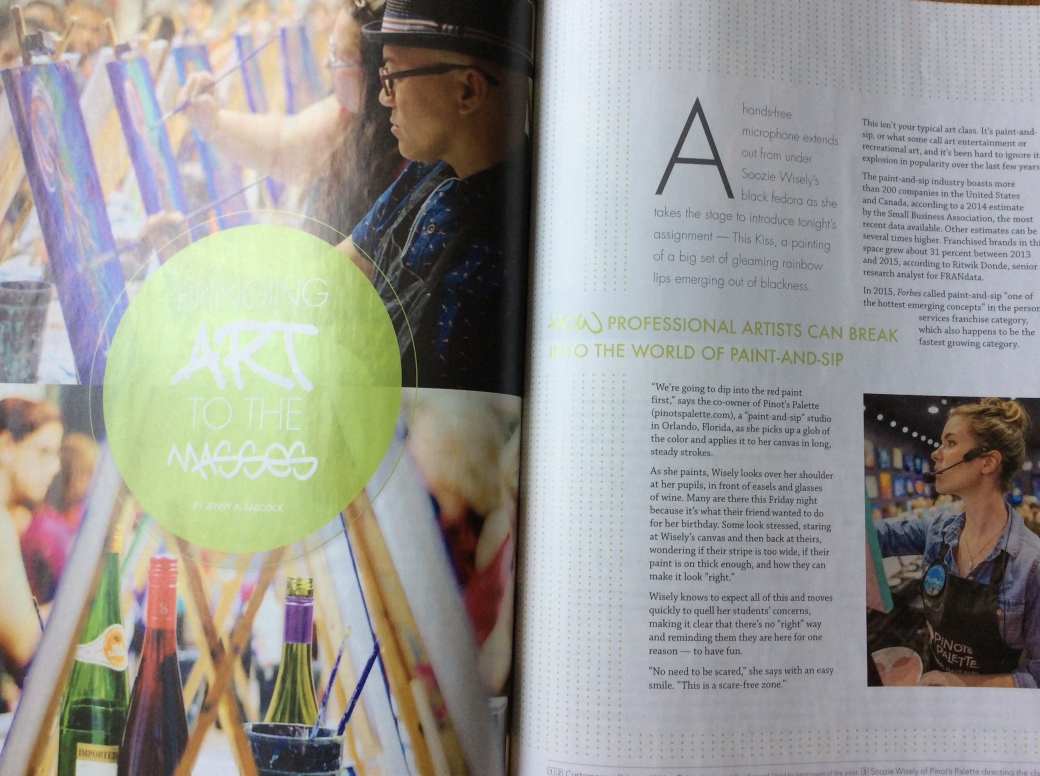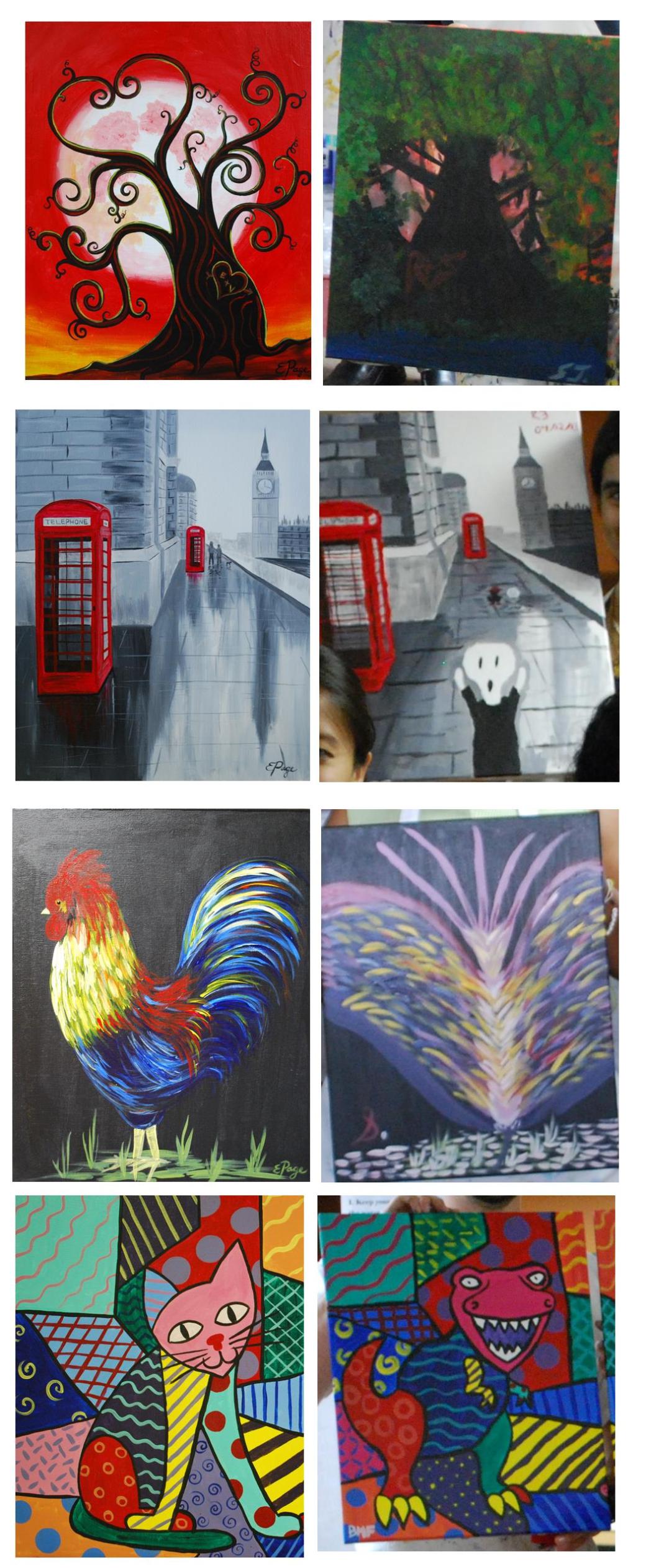Hi everyone, sorry for the long gap in posts, but I’ve been hard at work on a variety of projects. I thought I’d pop over to share some fun news with you: Artistic Abandon has been featured in the February/March 2017 issue of Professional Artist magazine! Here’s an excerpt of what they had to say:
“Emily Page taught for Painting with a Twist, and when she decided to open her own paint-and-sip studio, she wasn’t happy with the franchise deal the corporation offered her. She had created many example paintings for the company, so she thought she’d just make more. And, she could contract someone to build a computer system for her for a lower price than the franchise would offer for their systems, she said. And in her heart, it just didn’t feel right to franchise.
‘It didn’t really seem to me like a very good deal,’ she said. ‘I watched franchise owners get frustrated at wanting to try something different and being told by corporate that that’s not the business model.’
She opened Artistic Abandon (artisticabandon.com) in Raleigh, N.C., five and a half years ago. There are a couple things that set her studio apart from the franchised ones: The painting library is ‘less cartoony, more like real paintings,’ and the teaching style is more comprehensive. ‘I figured out how to break it down in a much more step-by-step method,’ she said.
Independent studios have some unique challenges. The franchises have the name recognition, and they can put locations anywhere, and sometimes they don’t separate them out very well, Page said. It can be hard to compete, especially in the beginning. And, if new owners don’t partner with other indy studios, they will probably have to pay more for art supplies because they won’t have access to bulk pricing.
Her advice to artists looking to start a paint-and-sip of their own? ‘You have to have patience. It is a customer service job…If you’re not willing to repeat yourself a bunch of times, it’s not the job for you.’ She also warns artists to make sure they understand the liquor laws in their county. Contact the state department of alcoholic beverage control to find out what can and can’t be done.
A couple years after opening Artistic Abandon, Page was approached about franchising her business. ‘It seemed hypocritical. If I wasn’t willing to do it [join a franchise], it seems unfair for me to offer it,’ she said. So, instead, she started a consulting business – kind of like franchising lite – to help artists and non-artists alike open their own studios…
She’s helped seven studios open so far. She offers tools, including a library of paintings, guidelines and suggestions. The studios have banded together to get wholesale prices on materials. Unlike in franchising, the studio gets to pick its own name and doesn’t pay a royalty fee.
In addition to running and teaching at her studio and consulting, Page makes what she calls her ‘real art,’ original paintings, to sell through emilypageart.com. She said during the first couple years of having her paint-and-sip, her art took a backseat, but now that the studio is established, she’s able to spend more time making art, and, maybe more importantly, marketing it.”






